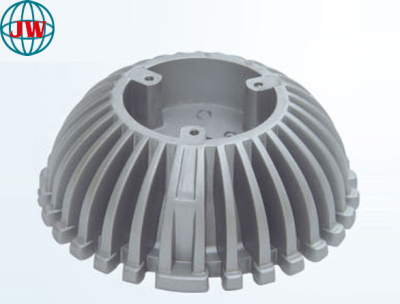
Die Castings and Die Casting Molds: The Backbone of High-Precision Manufacturing
2025-07-19 15:35
In the fast-paced world of industrial production, die castings and die casting molds form an inseparable pair that drives efficiency, precision, and innovation. From the smallest components in consumer electronics to large structural parts in automotive manufacturing, these elements underpin the creation of durable, complex metal parts at scale. As global demand for lightweight, high-performance products surges, the role of die casting technology—poweredby advanced molds—has never been more critical.
The Symbiotic Relationship: Molds and Castings
At the heart of the process lies the die casting mold—a precision tool typically made from hardened steel, engineered to shape molten metal into specific forms. These molds consist of two halves: the fixed “cover die” and the movable “ejector die,” which clamp together under extreme pressure (often 1,000–20,000 psi) to create a cavity. When molten metal—most commonly aluminum, zinc, or magnesium alloys—is injected into this cavity, it fills every intricate detail of the mold before cooling and solidifying into a die casting with near-net shape accuracy.
This relationship is symbiotic: A high-quality die casting moldensures consistent castings with tight tolerances (often ±0.005 inches), while the design of the casting itself influences the mold’s complexity and longevity. For example, a zinc die casting for a watch casing requires a mold with microscale precision to capture fine textures, while an aluminum die casting for a car engine bracket demands a robust mold capable of withstanding thousands of cycles under high temperature.
Die casting molds are the unsung heroes of mass production, offering three key advantages:
Repeatability: Unlike sand casting molds, which are disposable, die casting molds are reusable, often lasting 100,000–1 million cycles depending on material and design. This reusability ensures each die casting is nearly identical, critical for industries like aerospace where part interchangeability is non-negotiable.
Design Flexibility: Modern molds are crafted using computer-aided design (CAD) and 3D machining, allowing for complex geometries—such as internal cavities, thin walls (as low as 0.5mm), and threaded holes—that would be costly or impossible to achieve with other methods. A mold for a smartphone camera frame, for instance, can integrate 12 separate mounting points in a single casting, eliminating the need for assembly.
Cost Efficiency Over Time: While die casting molds require significant upfront investment their longevity drives down per-unit costs. For high-volume production runs—say, 1 million castings—the mold cost is amortized to pennies per part, making die casting far cheaper than machining or forging.
Advantages of Die Castings in Modern Manufacturing
Die castings themselves offer a suite of benefits that make them indispensable across industries:
Strength and Lightweight: Aluminum die castings are 30% lighter than steel parts while maintaining comparable strength, a boon for electric vehicles (EVs) seeking to extend battery range. Similarly, magnesium die castings—60% lighter than aluminum—are revolutionizing laptop and tablet frames, reducing device weight without sacrificing durability.
Dimensional Accuracy: The high pressure of die casting ensures castings conform tightly to mold specifications, minimizing the need for post-processing. A study by the North American Die Casting Association (NADCA) found that die castings require 50% less machining than sand cast parts, cutting production time by 30%.
Material Efficiency: Unlike subtractive manufacturing (where metal is carved away from a solid block), die casting uses 95% of the molten metal injected into the mold, reducing waste and raw material costs. This efficiency aligns with sustainability goals, making die castings a preferred choice for eco-conscious brands.
Innovations in Mold Technology
Advancements in die casting mold design are pushing the boundaries of what’s possible. 3D-printed mold inserts—made from high-performance alloys—allow for rapid prototyping, enabling manufacturers to test casting designs in weeks instead of months. For example, Tesla’s Gigacasting process uses molds (some weighing over 100 tons) to produce entire EV underbodies in a single casting, replacing 70+ welded parts and slashing production time.
Cooling channel optimization is another breakthrough: Computer simulations now design mold cooling systems that circulate water or oil precisely where heat accumulates, reducing cycle times by 20–30%. This is critical for zinc die castings, which solidify quickly but require uniform cooling to avoid defects like porosity.
Industry Applications: From Micro to Macro
The versatility of die castings and molds spans sectors:
Automotive: EV manufacturers rely on large aluminum die castings for battery enclosures, while traditional automakers use zinc die castings for door locks and ignition components. The molds for these parts must withstand high temperatures (up to 700°C for aluminum) and repeated use.
Consumer Electronics: Smartphones, tablets, and wearables depend on zinc and magnesium die castings for their frames and hinges. Molds for these parts are designed with microtextures to improve grip and accommodate tiny sensors.
Industrial Machinery: Heavy equipment uses die castings for hydraulic valve bodies and pump housings, where the mold’s precision ensures leak-free performance. Stainless steel molds are often used here to resist corrosion from hydraulic fluids.
Challenges and Future Trends
Despite their strengths, die castings and molds face challenges. Mold maintenance is critical: Wear from repeated clamping and high temperatures can degrade mold surfaces, leading to defects in castings. To address this, manufacturers are adopting mold monitoring systems—sensors embedded in molds that track temperature, pressure, and wear in real time, alerting operators to maintenance needs before failures occur.
Looking ahead, sustainability will drive innovation. Recycled aluminum alloys are already being used in die castings, reducing carbon footprints by 50%. Meanwhile, biodegradable lubricants for mold maintenance and energy-efficient die casting machines are making the process greener.
The rise of AI is also transforming mold design: Machine learning algorithms can predict how molten metal flows in a mold, optimizing cavity shapes to reduce defects. This technology has cut mold development time by 40% for companies like Toyota and Apple.
Conclusion
Die castings and die casting molds are the unsung engines of modern manufacturing, enabling the production of parts that are strong, precise, and cost-effective. As industries demand lighter, more complex components, the synergy between advanced molds and innovative casting techniques will continue to drive progress. From EVs to smart devices, their impact is everywhere—proof that in the world of production, the right mold truly shapes the future.
Get the latest price? We'll respond as soon as possible(within 12 hours)












